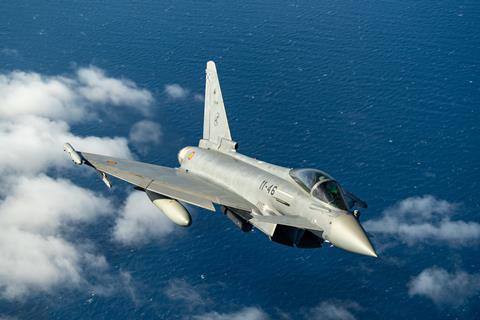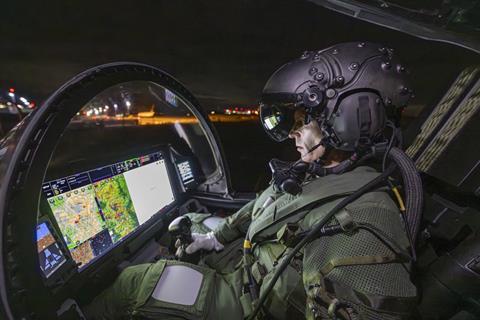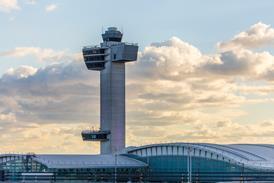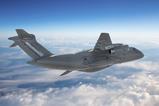The four-nation Eurofighter programme has marked a significant advance towards a mid-life upgrade for the type, with the signature of a contract for Part 1 of the long-term evolution (LTE) effort’s technology maturation phase.
Announced on 19 December, the milestone move follows the receipt of German parliamentary approval earlier this week, the Eurofighter consortium says. This led to the deal’s signature by the industry group and the NATO Eurofighter and Tornado Management Agency (NETMA), acting on behalf of partner nations Germany, Italy, Spain and the UK.
“LTE will be the major mid-life technology upgrade for the Eurofighter, bringing several major enhancements to the jet – specifically to its avionics architecture,” says Eurofighter chief executive Giancarlo Mezzanatto.

That work will include developing a new cockpit featuring a large area display for the pilot, plus replacement flight-control and mission computers, communications equipment and armament control systems. Such enhancements will support future updates by expanding the platform’s “ability to handle large amounts of data, much faster”, Eurofighter says.
“The signature of the LTE contract demonstrates the commitment of our customers to continue the effectiveness of the Eurofighter aircraft and programme for many years to come,” Mezzanatto says.
The new technology maturation phase has previously been described by Eurofighter as to be a three-year activity.
“The enhancements delivered will ensure the aircraft remains at the forefront of innovation, delivering technological superiority and cutting-edge performance for its operators,” says NETMA general manager Simon Ellard.

With a large in-service fleet and new examples on order for Germany, Italy and Spain, the Eurofighter platform is expected to remain in frontline use with its core operating nations until during the 2060s.
Cirium fleets data used to compile FlightGlobal’s 2025 World Air Forces directory shows that are more than 530 Eurofighters in current use. The programme’s European launch nations account for 399 of those aircraft, with export users Austria, Kuwait, Oman, Qatar and Saudi Arabia operating the remainder.































